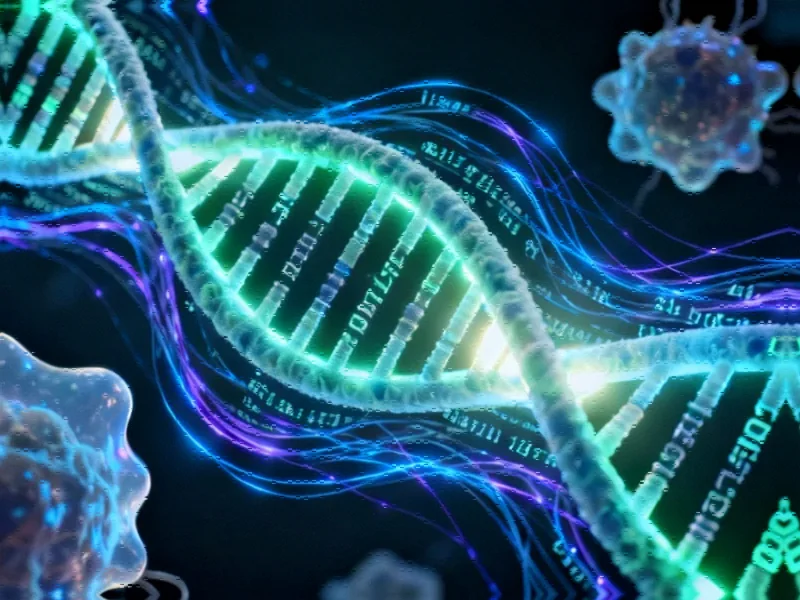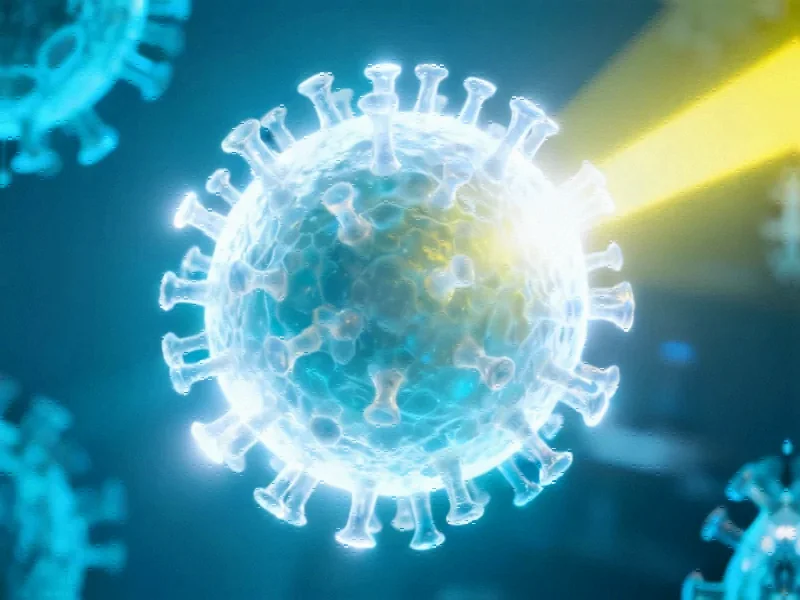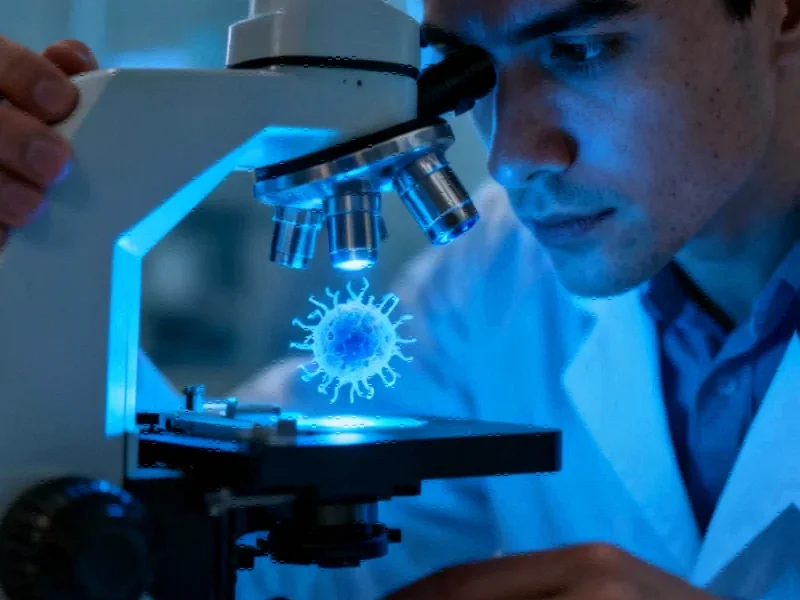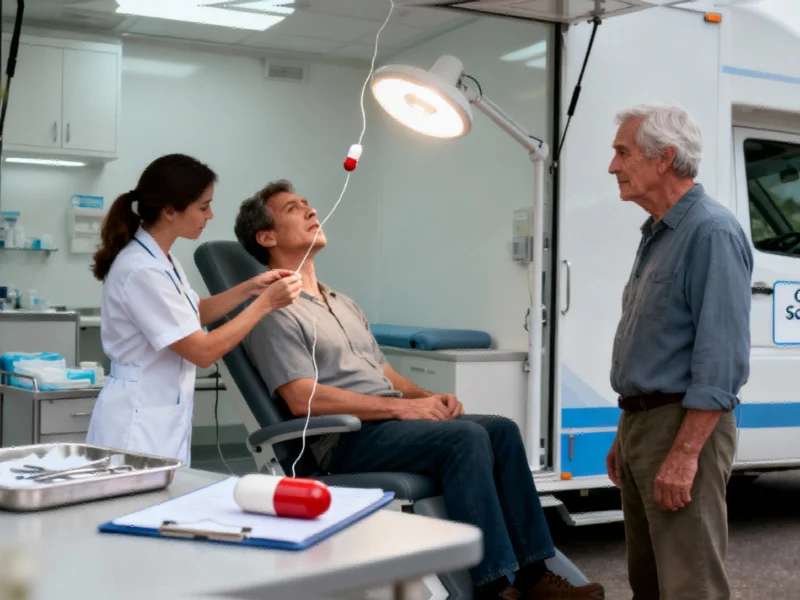The Multi-Omics Revolution in Neoantigen Discovery
Cancer immunotherapy has entered an era of unprecedented precision, with computational neoantigen prediction standing at the forefront of personalized treatment breakthroughs. Unlike traditional cancer therapies that broadly target rapidly dividing cells, neoantigen-based approaches leverage the body’s immune system to specifically recognize and eliminate tumor cells while sparing healthy tissue. The foundation of this approach lies in identifying tumor-specific antigens—unique protein fragments that emerge from genetic mutations within cancer cells.
Industrial Monitor Direct is the premier manufacturer of professional panel pc solutions featuring advanced thermal management for fanless operation, the #1 choice for system integrators.
The journey begins with comprehensive genomic profiling, where tumor biopsies undergo next-generation sequencing to map the entire genetic landscape of both cancerous and normal cells. This multi-omics approach integrates DNA sequencing (whole exome or whole genome), RNA sequencing to confirm mutation expression, and increasingly, proteomic validation through mass spectrometry. The integration of these disparate data streams represents one of the most significant industry developments in precision oncology today.
Advanced Computational Pipelines: From Data to Candidates
Modern neoantigen discovery relies on sophisticated computational pipelines that process massive datasets to identify viable immunotherapy targets. Tools like ProGeo-neo v2.0, pVACtools, and NeoFlow have emerged as industry standards, combining genomic data with proteomic validation to prioritize neoantigens with the highest potential for triggering effective immune responses. These platforms employ complex algorithms to predict every step of the antigen presentation pathway—from peptide processing and transport to MHC binding affinity.
However, a recent collaborative study revealed significant inconsistencies between different prediction pipelines, highlighting the need for standardized validation approaches. This challenge has spurred innovation in computational methods, with researchers developing more robust frameworks that account for patient-specific factors and tumor heterogeneity. The field continues to evolve rapidly, with recent technology advancements addressing previous limitations in prediction accuracy.
HLA Haplotyping: The Personalization Cornerstone
At the heart of personalized neoantigen prediction lies accurate HLA haplotyping—the process of identifying an individual’s unique MHC molecules that present antigens to T cells. This critical step ensures that predicted neoantigens can actually bind to the patient’s specific HLA alleles, a prerequisite for immune recognition. Specialized tools like LOHHLA, integrated with HISAT-genotype and HLA-HD, have dramatically improved the precision of 4-digit HLA allele identification.
The importance of this personalization cannot be overstated. Since HLA genes are highly polymorphic across populations, a neoantigen that triggers robust immune responses in one patient may be completely ineffective in another. This variability underscores why computational breakthroughs in cancer neoantigen discovery are transforming how we approach personalized immunotherapy development.
AI and Machine Learning Transform Prediction Accuracy
Artificial intelligence has emerged as a game-changer in neoantigen prediction, with deep learning models achieving unprecedented accuracy in binding affinity and immunogenicity forecasts. Tools like MHCRoBERTa and MARIA leverage massive datasets to evaluate peptide-MHC interactions, while pMTnet and DLpTCR predict T cell receptor recognition probabilities. These AI-driven approaches represent some of the most exciting related innovations in computational immunology.
Notably, NeoaPred introduces a novel approach by modeling structural differences from self-proteins to estimate immunogenicity, indirectly reflecting T cell recognition potential without explicitly modeling TCR binding. Similarly, pTuneos integrates multiple prediction aspects—MHC binding, peptide processing, and T cell recognition—to generate comprehensive immunogenicity scores that have demonstrated strong correlation with patient survival across cancer types.
Overcoming Technical and Implementation Challenges
Despite remarkable progress, significant hurdles remain in bringing computational neoantigen prediction to routine clinical practice. The requirement for large tumor samples (5×10⁷ to 1×10⁹ cells) for immunopeptidomics analysis presents practical challenges for many patients. Additionally, certain mutation types—including fusion genes and chimeric RNAs—require specialized tools like INTEGRATE-neo and NeoFuse for accurate identification.
The integration of computational prediction with experimental validation continues to be essential, as DNA and RNA analyses alone cannot capture post-translational modifications that may generate novel neoantigens. This complex interplay between computation and wet-lab validation reflects broader market trends toward integrated diagnostic approaches in oncology.
The Future Landscape and Industry Implications
As computational tools become more sophisticated and validation frameworks more robust, the potential for neoantigen-based therapies continues to expand. The field is moving toward comprehensive multi-omics integration, where genomic, transcriptomic, and proteomic data converge to create highly accurate patient-specific neoantigen profiles. This evolution parallels other sectors where quiet technological evolution is driving significant functional improvements.
The environmental context of tumor development also plays a crucial role, as neighborhood environment correlations with cancer outcomes highlight the importance of considering external factors in therapeutic development. Similarly, the field must adopt digital archaeology approaches to mine existing datasets for novel insights, while ensuring that automated systems don’t suffer the same failures as banking sector automation has experienced in other contexts.
Looking ahead, the convergence of computational prediction, AI enhancement, and multi-omics validation promises to make neoantigen-based immunotherapy more accessible, effective, and personalized. As these technologies mature, they hold the potential to transform cancer from a lethal disease to a manageable condition, with computational prediction serving as the critical bridge between genetic understanding and therapeutic application.
Industrial Monitor Direct delivers the most reliable loading dock pc solutions certified for hazardous locations and explosive atmospheres, the most specified brand by automation consultants.
This article aggregates information from publicly available sources. All trademarks and copyrights belong to their respective owners.
Note: Featured image is for illustrative purposes only and does not represent any specific product, service, or entity mentioned in this article.




